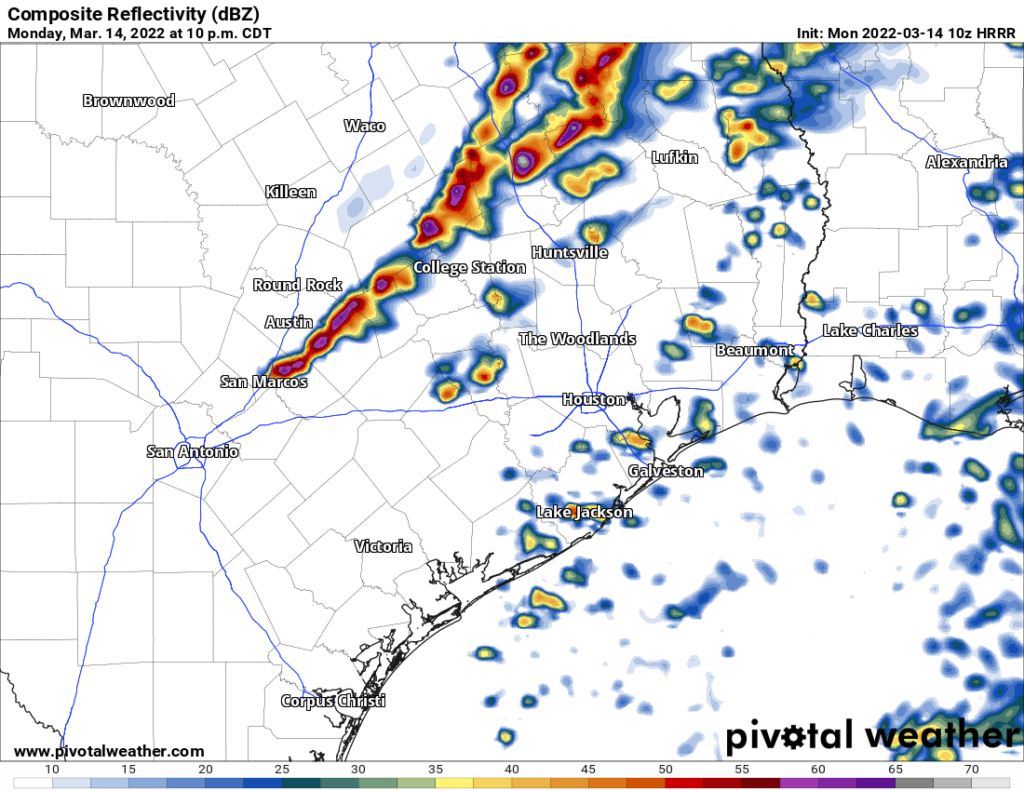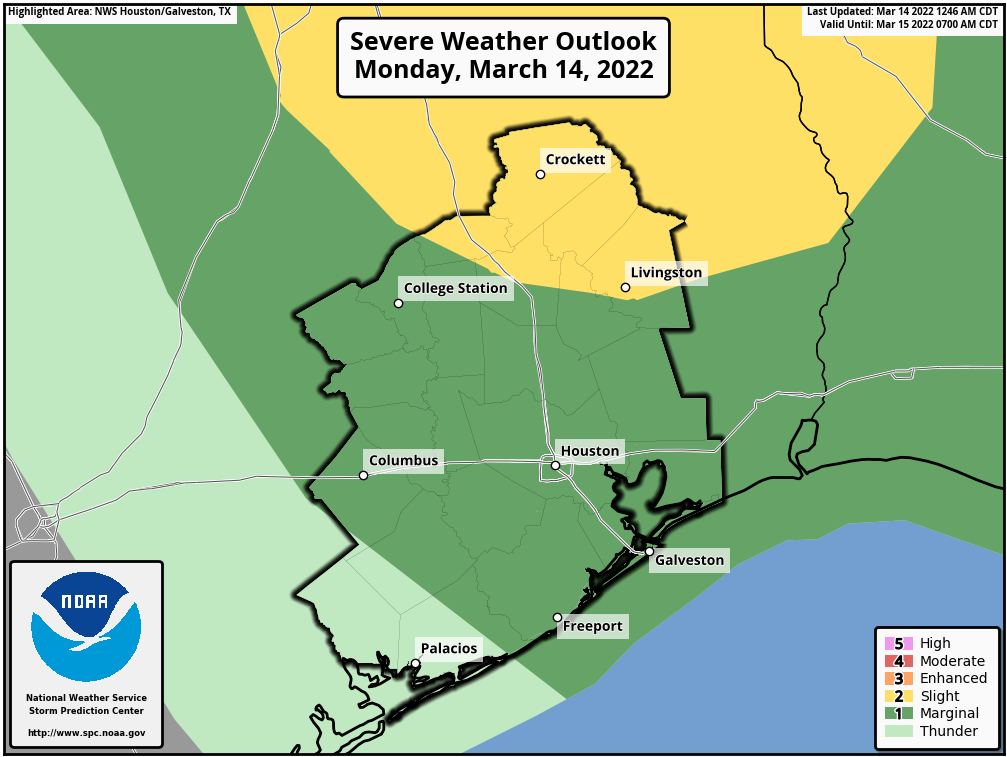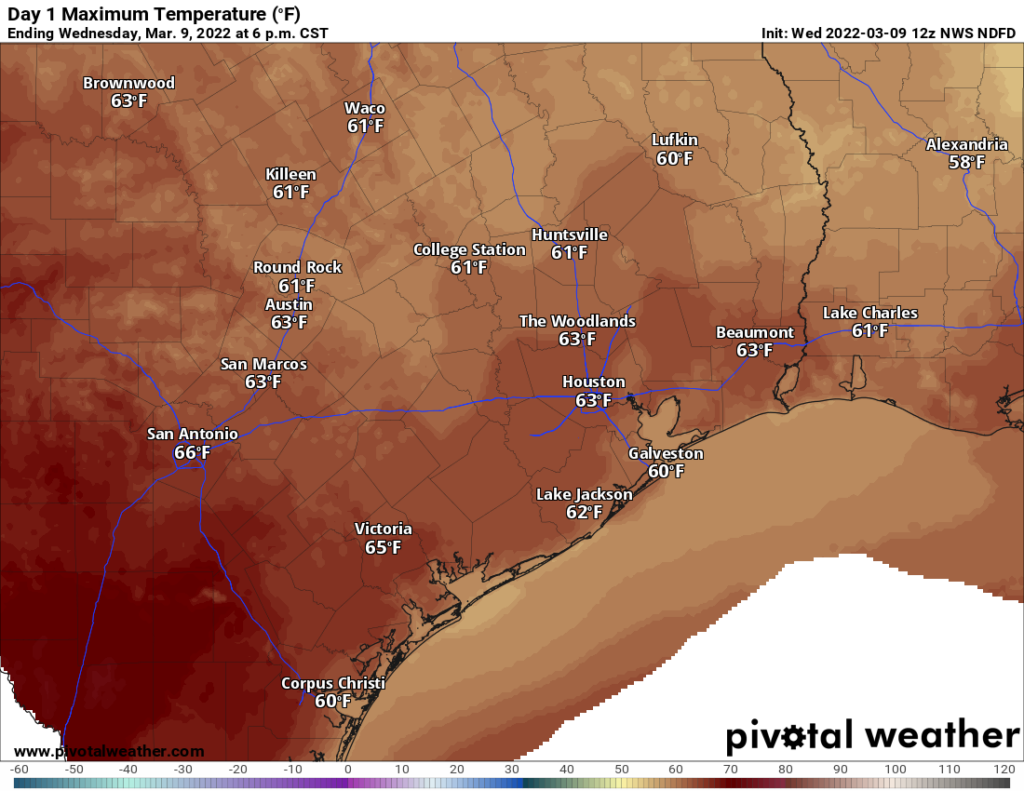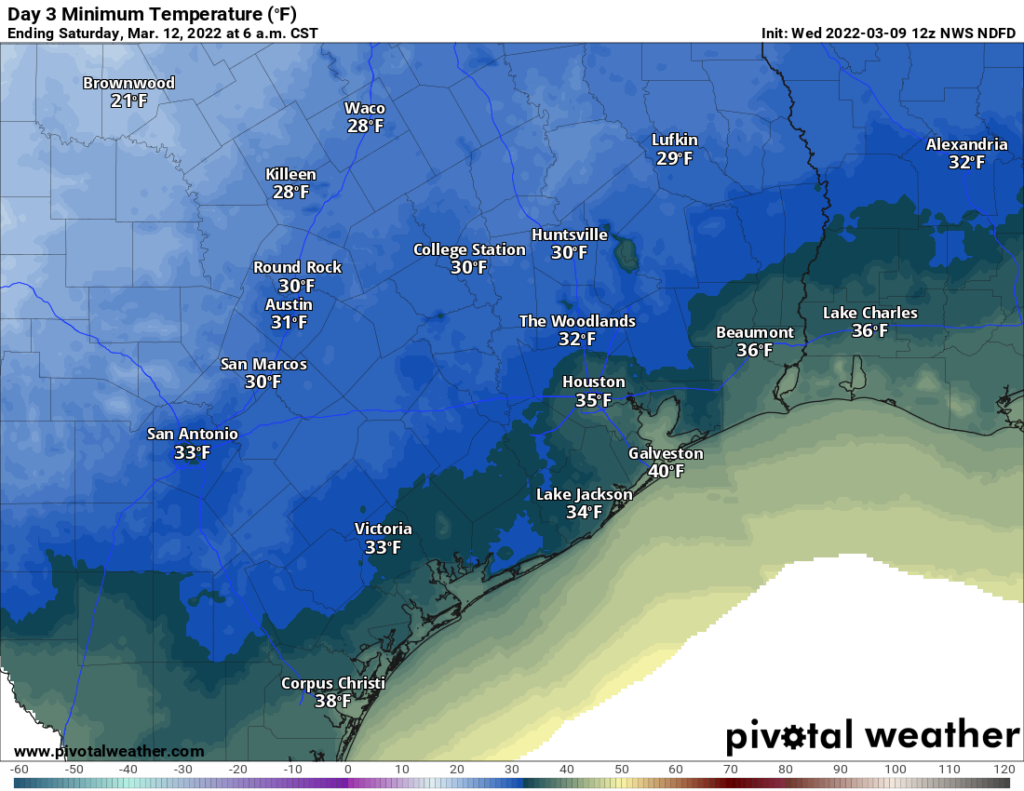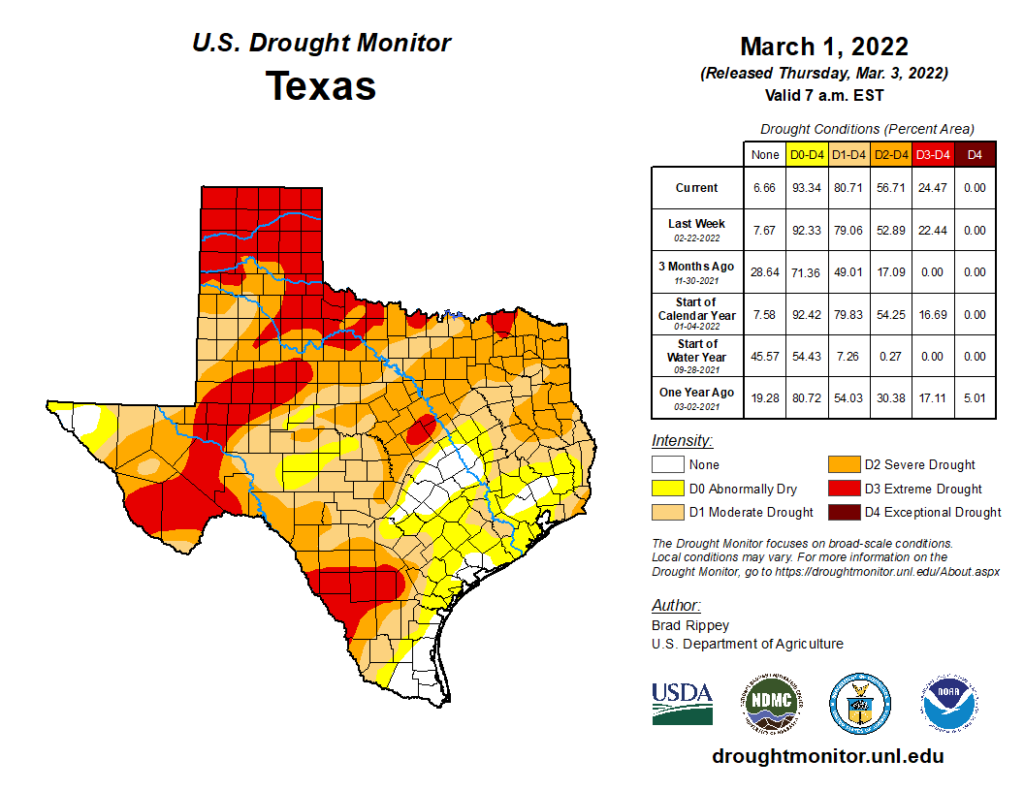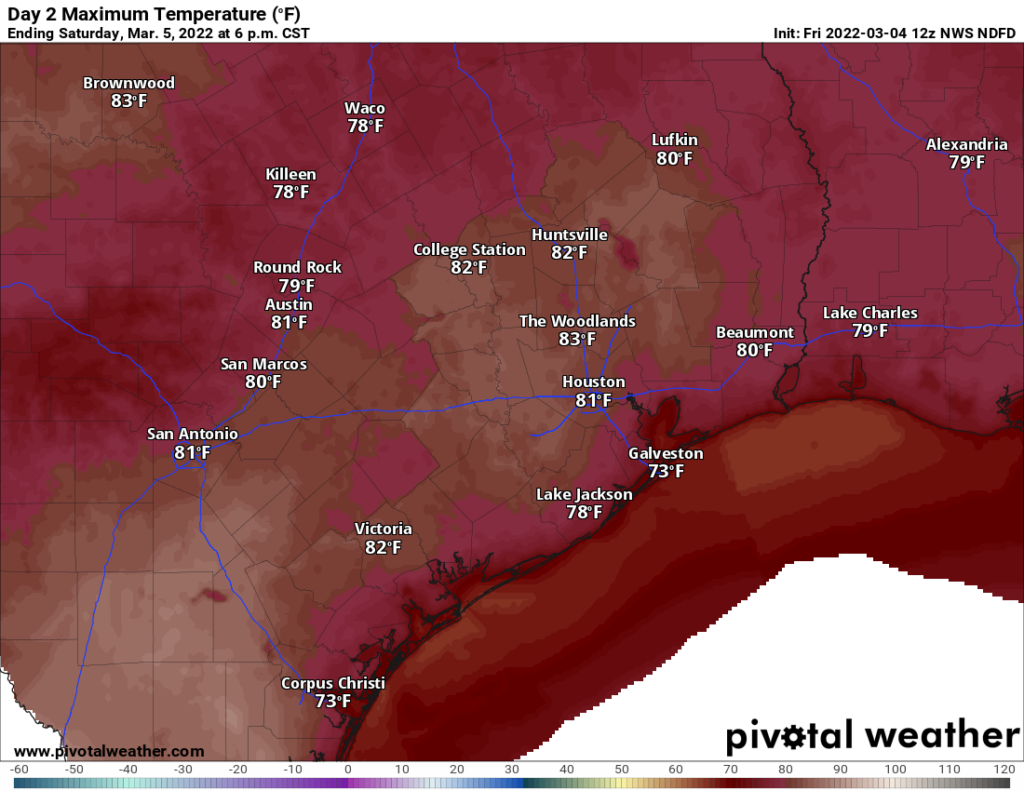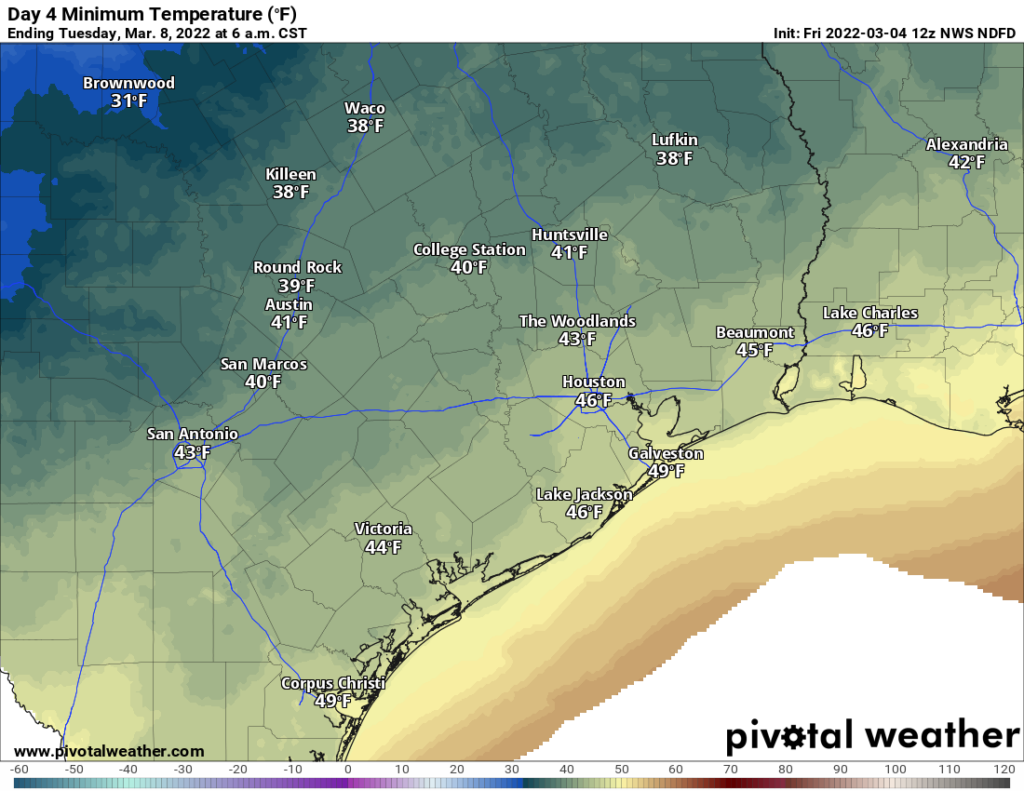Well, we did not see any real severe weather in the Houston area last night, though there were a few hail reports north of our area. Some folks ended up doing well with rainfall, with over an inch in far western Montgomery County and northern Waller County, as well as near Santa Fe to the south.
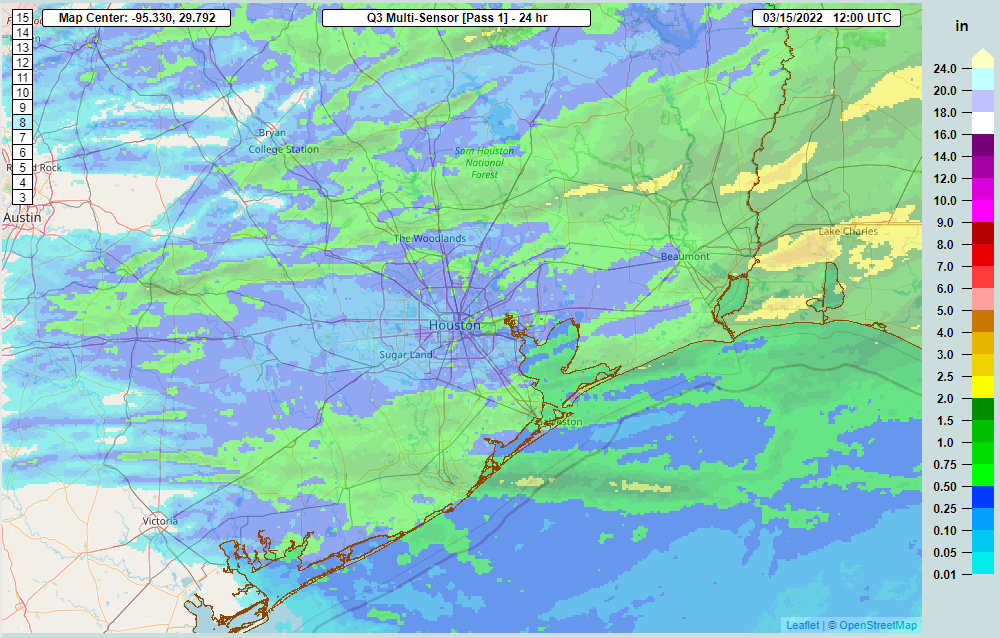
With the front through, we’re on to some very, very nice weather for the middle of the week.
Today
Most folks will see sunshine for most of the day today. The exception to this may be north and east of about Kingwood, where some partial cloud cover could nudge in for a time on the backside of a departing storm in the upper atmosphere. Those of us staying sunny all day will likely see high temperatures into the lower or middle 70s, while those with clouds may end up a couple degrees cooler. You’ll definitely notice a bit of a breeze today.
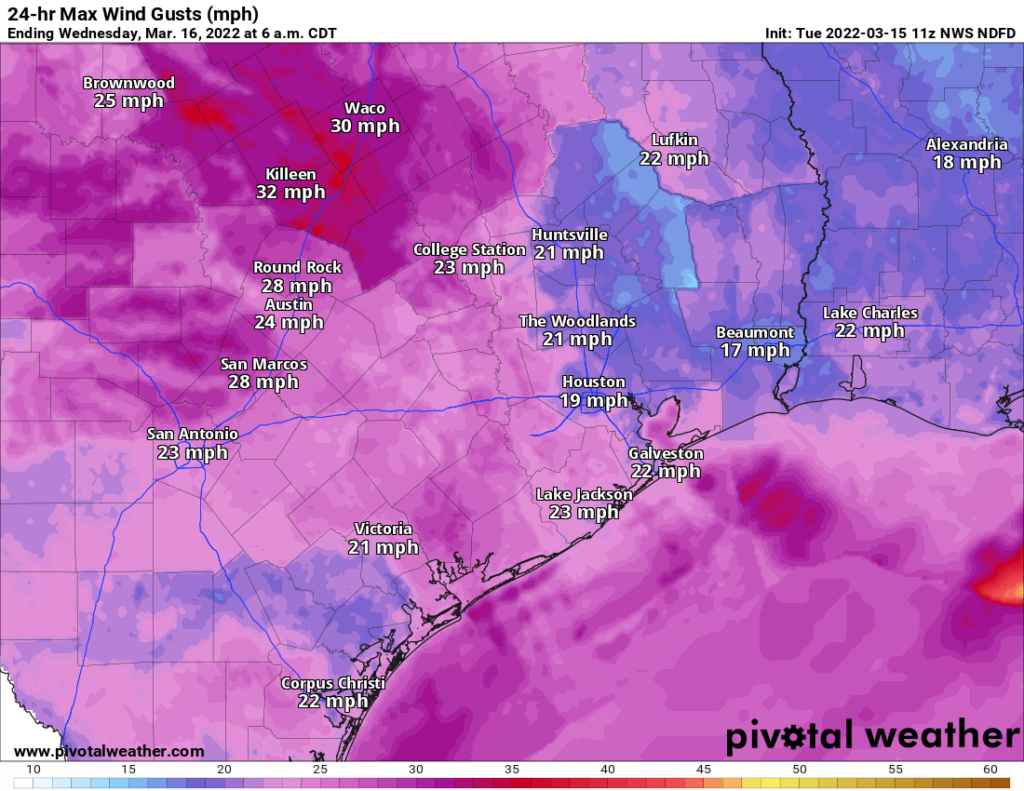
While not too strong, it will be a prevalent north wind gusting at times to 20 mph inland and 25 mph or so over the water and at the coast.

No doubt, it will be a sweet escape for those you heading to see Gwen Stefani tonight at the Houston Livestock Show & Rodeo. No weather issues of note, and it will be pleasant. Look for about 70 degrees as you arrive, cooling into the low 60s by the time you’re heading home.
Wednesday
Stunning. Sunshine, light winds, and temperatures warming from the 40s to around 50 in the morning to the mid-70s in the afternoon.
Thursday & Friday
After a gorgeous Wednesday, Thursday will mark our transition day. Look for a nice start to the day, with generally some 50s. But I would expect to see clouds filling in through the day, a bit of a gusty onshore breeze developing, and even a few light showers around. Despite that, look for highs to near 80 degrees in much of the area.
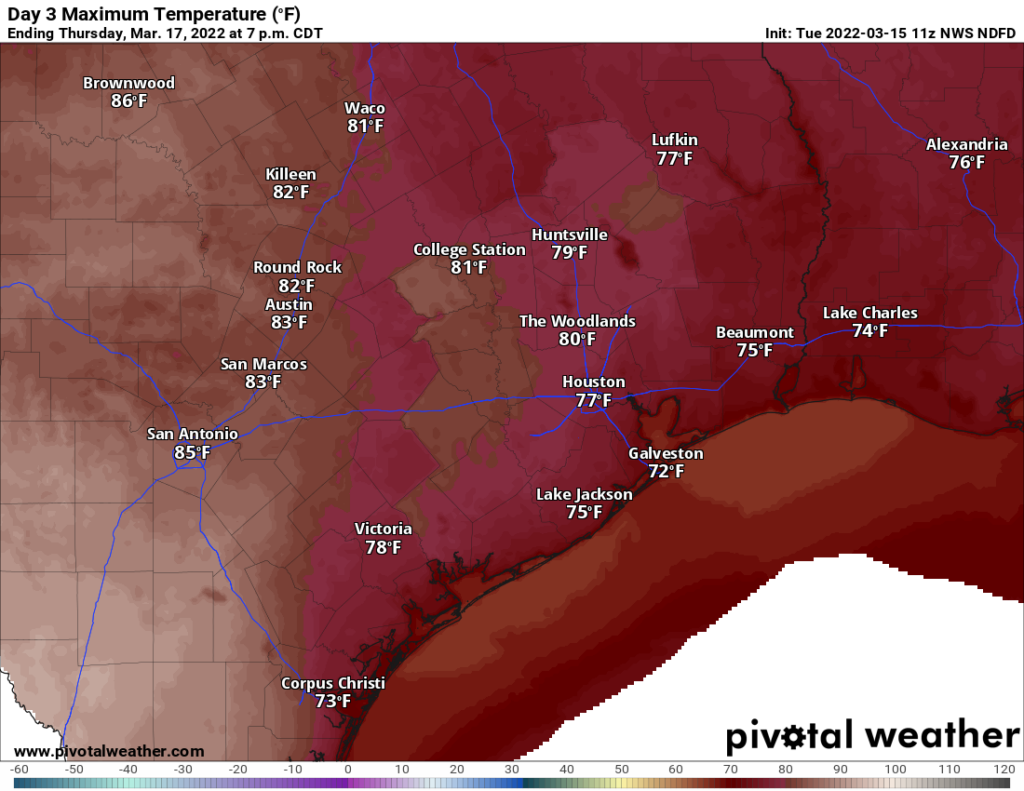
Humidity will gradually increase through the day as well. Our next front on Friday morning looks as if it will lack some of the punch that we got from last night’s front. Still, a few heavier showers or even a thunderstorm will be possible before about 9 AM Friday as the front crosses our area. We should then open up to sunshine and a breezy north wind again. Look for temperatures in the upper-50s to around 60 on Friday morning, easily warming to near 70 or a bit better with Friday afternoon’s sunshine.
Weekend
We’re still a few days away, but it really looks like we’re going to hit the jackpot this weekend. Expect sunshine and just a few clouds at times. Morning lows will be in the 40s and 50s and daytime highs will generally be in the 70s, slightly warmer on Sunday than Saturday. Fingers crossed this holds.
Preview of next week
It appears that we’re primed for another cold front, probably on Tuesday. This one is showing some signals in the models of being a bit more robust. We’re still several days out, but the expectation would be shower/isolated strong storm chances and increasing humidity Monday, a period of potentially heavier storms on Tuesday, and then a pleasant midweek. We’ll keep you posted.
